The jeep wrangler takes a specific type of coolant for optimal performance. Read on to find out which coolant is recommended for your jeep wrangler and why it is important to use the right one.
The jeep wrangler is a rugged and iconic off-road vehicle known for its durability and versatility. To keep your wrangler running smoothly, it is important to use the right type of coolant. The recommended coolant for a jeep wrangler is a mixture of 50% ethylene glycol antifreeze and 50% distilled water.
This coolant provides the necessary protection against freezing in cold temperatures and overheating in hot conditions. It also prevents corrosion and helps maintain the efficiency of the engine’s cooling system. Using the proper coolant can prolong the life of your jeep wrangler and prevent costly repairs. So, make sure to use the recommended coolant to keep your jeep wrangler performing at its best.
Why Choosing The Right Coolant For Your Jeep Wrangler Is Important
Importance Of Selecting The Correct Coolant For Optimal Performance
When it comes to your jeep wrangler’s engine, choosing the right coolant is crucial. Here’s why:
- Proper cooling: The coolant is responsible for keeping your engine cool by absorbing and dissipating heat. Using the correct coolant ensures optimal cooling performance, preventing the engine from overheating during long drives or intense off-road adventures.
- Effective corrosion protection: The right coolant contains additives that protect your engine’s metal parts from corrosion. Corrosion can lead to the formation of rust, which damages the engine and reduces its lifespan. By using the recommended coolant, you can ensure proper corrosion protection and prolong your jeep’s engine life.
- Maintaining warranty coverage: Using the recommended coolant is often a requirement for maintaining your jeep’s warranty coverage. Failure to adhere to the manufacturer’s recommendations could result in warranty voidance, leaving you responsible for costly repairs.
How The Wrong Coolant Can Damage Your Jeep’S Engine
Using the wrong coolant for your jeep wrangler can have detrimental effects on your engine. Here’s what can happen:
- Inadequate cooling: Different coolants have varied heat transfer properties. Using an incorrect coolant can hinder the cooling process, potentially leading to engine overheating. This can cause severe damage to various engine components, such as the cylinder head, gaskets, and even the pistons.
- Increased corrosion risk: Certain coolants are not compatible with the materials used in your jeep’s engine, which can accelerate the corrosion process. Over time, this can lead to leaks, engine performance issues, and costly repairs.
- Impaired warranty coverage: If the wrong coolant is used and engine damage occurs as a result, your warranty coverage may be voided. This means you’ll have to bear the financial burden of repairs that could have otherwise been covered under warranty.
Avoiding Costly Repairs By Using The Recommended Coolant
To prevent unnecessary repairs and expenses, always follow your jeep wrangler’s manufacturer guidelines regarding coolant selection. Here’s why it’s crucial:
- Optimal engine performance: Using the recommended coolant helps maintain the engine’s performance and efficiency, ensuring it operates at its best. This improves fuel economy and overall power delivery.
- Longevity of engine components: The recommended coolant provides the necessary protection against corrosion, extending the life of your engine’s components. It eliminates the risk of premature failure and the need for expensive replacements.
- Preserving warranty coverage: By using the recommended coolant, you adhere to the manufacturer’s specifications, safeguarding your warranty coverage. This ensures that any potential repairs or replacements are covered if an issue arises within the warranty period.
Remember, selecting the correct coolant for your jeep wrangler not only promotes optimal engine performance but also guards against costly repairs and safeguards your warranty coverage. So, make it a priority to use the recommended coolant for the best long-term outcomes.
Understanding The Different Coolant Types For Your Jeep Wrangler
Coolant is a vital component of your jeep wrangler’s engine that plays a crucial role in keeping it running smoothly. Understanding the different types of coolant available for your vehicle is essential for maintaining optimal performance. In this section, we will explore the basics of coolant, the differences between organic acid technology (oat) and hybrid organic acid technology (hoat), the recommended coolants for jeep wranglers, and whether oem or aftermarket coolants are the better option.
The Basics: What Is Coolant And Its Purpose In The Engine

Coolant, also known as antifreeze, is a liquid that circulates through the engine, absorbing and dissipating heat generated during the combustion process. Its primary purpose is to regulate the engine’s temperature, preventing it from overheating or freezing in extreme weather conditions.
Without coolant, the engine could suffer significant damage from excess heat or freezing temperatures.
The Difference Between Organic Acid Technology (Oat) And Hybrid Organic Acid Technology (Hoat)
- Oat:
- Oat coolants are made from a mix of organic acid salts and include additives that protect against corrosion and cavitation.
- They are typically orange or red in color and provide excellent long-term protection for aluminum components.
- Oat coolants have an extended service life, usually ranging from 5 to 7 years or 150,000 to 250,000 miles.
- Hoat:
- Hoat coolants are a hybrid blend of oat and inorganic additives, providing enhanced protection against corrosion for both aluminum and cast-iron components.
- They are often orange or yellow in color and are designed to last longer than traditional green coolants.
- Hoat coolants typically have a service life of 3 to 5 years or 100,000 to 150,000 miles.
Recommended Coolants For Jeep Wranglers
When it comes to keeping your jeep wrangler’s engine in its best shape, using the right coolant is crucial. Here are some recommended options:
- Mopar oat coolant: This coolant is specifically engineered for jeep wranglers and meets the manufacturer’s specifications. It provides optimal protection against corrosion and is formulated to maximize the lifespan of your engine.
- Zerex g-05: Zerex g-05 is a universal hoat coolant that complies with the oem specifications of most jeep wranglers. It offers excellent protection against rust, cavitation, and corrosion in all engine components.
- Prestone extended life antifreeze/coolant: This oat coolant is designed to provide long-lasting protection and can be used in various jeep wrangler models. It offers corrosion resistance for all cooling system metals, including aluminum.
Oem Vs. Aftermarket Coolants: Which Is The Better Option?
- Oem coolants: Original equipment manufacturer (oem) coolants are developed by the vehicle manufacturer and specifically formulated to meet their requirements. Using oem coolant ensures compatibility and may provide additional benefits like warranty coverage.
- Aftermarket coolants: Aftermarket coolants are produced by third-party manufacturers and are generally more affordable compared to OEM options. While they may meet industry standards, there is a risk of compatibility issues and potential warranty concerns.
It is recommended to consult your vehicle’s manual or a trusted mechanic to determine the best coolant for your jeep wrangler. They can provide guidance based on your specific model and its cooling system requirements.
Remember, regularly inspecting and maintaining your coolant levels is essential for optimal engine performance and longevity. Keeping your jeep wrangler’s cooling system in top shape will help you enjoy smooth drives and prevent costly repairs down the road.
Finding The Right Coolant For Your Jeep Wrangler
Checking The Owner’S Manual For Manufacturer Specifications
When it comes to finding the right coolant for your jeep wrangler, the first step is to check the owner’s manual for the manufacturer’s specifications. The manual will provide you with valuable information about the type of coolant that is recommended for your specific model and year of jeep wrangler.
By following the manufacturer’s guidelines, you can ensure that you are using the correct coolant that will provide optimal performance for your vehicle.
Understanding Coolant Specifications And Compatibility
Coolants come in different formulations and specifications, and it’s important to understand what these mean and how they can affect your jeep wrangler. Here are some key points to keep in mind:
- Coolant types: There are two main types of coolant, namely ethylene glycol (eg) and propylene glycol (pg). Both types have their pros and cons, so it’s crucial to choose the one that is compatible with your jeep wrangler’s cooling system.
- Coolant ratio: The ratio of coolant to water is essential for maintaining the right balance of temperature and freeze protection. It’s typically recommended to mix coolant with distilled water in a 50:50 ratio, but the owner’s manual will have the exact ratio for your jeep wrangler.
- Compatibility: It’s crucial to ensure that the coolant you choose is compatible with the materials used in your jeep wrangler’s cooling system. Some coolants are designed specifically for certain types of engines or radiator materials, so it’s necessary to check compatibility before making a purchase.
Top Coolant Brands For Jeep Wranglers
Now that you know what to look for in a coolant, let’s explore some of the top coolant brands trusted by jeep wrangler owners:
- Mopar: Mopar is the official parts and service division of chrysler, which makes it a reliable source for coolant specifically designed for jeep wranglers. Their coolants are formulated to meet the manufacturer’s specifications, ensuring optimal performance and protection.
- Zerex: Zerex offers a range of coolants that are compatible with various vehicle makes and models, including jeep wranglers. Their coolants are known for their advanced formulas that provide excellent protection against corrosion, overheating, and freezing.
- Prestone: Prestone is a well-known brand in the automotive industry, offering a wide range of coolants suitable for different vehicle types. They have coolant options that provide extended engine life and superior protection against temperature extremes.
Where To Buy The Recommended Coolant
When it comes to purchasing the recommended coolant for your jeep wrangler, you have a few options:
- Dealership: Your local jeep dealership is a reliable place to find the recommended coolant for your specific model and year. They can also provide guidance and answer any questions you may have.
- Auto parts store: Many auto parts stores carry a variety of coolant brands and formulations. Be sure to check the labels and choose a coolant that meets the specifications outlined in your owner’s manual.
- Online retailers: Buying coolant online can be convenient, especially if you prefer a specific brand or formulation. Just make sure to verify that the coolant you’re purchasing is compatible with your jeep wrangler and meets the manufacturer’s specifications.
Remember, using the right coolant is crucial for maintaining the performance and longevity of your jeep wrangler’s cooling system. By following the manufacturer’s recommendations and choosing a reputable brand, you can ensure that your jeep wrangler stays cool and protected on all your adventures.
Step-By-Step Guide To Changing The Coolant In Your Jeep Wrangler
Changing the coolant in your jeep wrangler is an essential maintenance task that helps ensure the engine remains cool and prevents overheating. If you’re not sure what type of coolant your jeep wrangler takes or how to go about changing it, don’t worry! In this step-by-step guide, we’ll walk you through the process so you can confidently tackle this task on your own.
Gathering The Necessary Tools And Supplies:
Before you begin changing the coolant in your jeep wrangler, it’s important to gather all the necessary tools and supplies. Here’s what you’ll need:
- Safety goggles and gloves to protect yourself from any spills or splashes.
- A drain pan to collect the old coolant.
- A socket wrench or pliers to remove the radiator drain plug.
- A funnel to easily refill the cooling system.
- The appropriate coolant for your jeep wrangler. Check your owner’s manual or consult with a professional to determine the correct type of coolant.
Draining The Old Coolant:
Once you have all the tools and supplies ready, it’s time to drain the old coolant from your jeep wrangler. Here’s how:
- Make sure the engine is cool before you begin.
- Locate the radiator drain plug at the bottom of the radiator.
- Place the drain pan underneath the drain plug to catch the coolant.
- Use a socket wrench or pliers to loosen and remove the drain plug.
- Allow the old coolant to drain completely into the pan.
- Once the coolant has drained, securely tighten the drain plug back in place.
Flushing The Cooling System:
After draining the old coolant, it’s essential to flush the cooling system to remove any residue or contaminants. Follow these steps:
- Remove the radiator cap, but only when the engine is cool.
- Flush the system by pouring distilled water into the radiator until it appears clean when draining.
- Replace the radiator cap and start the engine.
- Allow the engine to run for a few minutes to circulate the water through the cooling system.
- Once the engine has reached normal operating temperature, turn it off and let it cool.
- Open the drain plug and repeat the draining process to remove the water.
Refilling With The Appropriate Coolant:
Now that the cooling system is flushed and free of any contaminants, it’s time to refill it with the appropriate coolant. Follow these steps:
- Check your owner’s manual or consult with a professional to determine the correct coolant type and the required amount.
- Using a funnel, pour the coolant slowly into the radiator until it’s at the recommended level.
- Replace the radiator cap securely.
Bleeding The Air From The System:
To ensure proper circulation and prevent air pockets in the cooling system, it’s important to bleed the air. Here’s how:
- Start the engine and let it run for a few minutes.
- Turn on the heat to the highest setting and fan speed to the lowest setting.
- Allow the engine to run until you feel warm air coming through the vents.
- Once the air feels warm, turn off the engine and let it cool.
- Check the coolant level and top it up if necessary.
Proper Disposal Of Old Coolant:
Properly disposing of the old coolant is essential for environmental safety. Here’s what you need to do:
- Transfer the drained coolant from the drain pan into a sealable container.
- Take the container to a local recycling center or an authorized waste disposal facility for proper disposal.
- Never dispose of coolant in drains, sewers, or onto the ground.
With these step-by-step instructions, you’re now equipped to change the coolant in your jeep wrangler with confidence. Remember to always follow safety precautions and consult with professionals when needed. Regularly maintaining your cooling system will help keep your jeep running smoothly and efficiently.
Signs That Your Jeep Wrangler Needs A Coolant Change
Your jeep wrangler’s coolant plays a crucial role in maintaining the engine’s temperature and preventing overheating. Over time, the coolant can become contaminated or degrade, affecting its effectiveness. It’s important to recognize the signs that indicate your jeep wrangler is in need of a coolant change.
Keep an eye out for the following symptoms:
- ### recognizing symptoms of coolant degradation or contamination:
- Irregular engine temperature gauge readings: If you notice that your jeep’s engine temperature gauge is frequently fluctuating or consistently reading higher than usual, it could be a sign that the coolant needs to be changed. Coolant that has degraded or become contaminated may not be able to regulate the engine temperature properly.
- Sweet or pungent odor: A distinct odor, either sweet or pungent, emanating from your jeep’s engine area, could be an indication of coolant contamination. This could be caused by a coolant leak or a failing coolant component, such as the radiator or hoses. Ignoring this odor could lead to further engine damage.
- Discolored coolant: Under normal circumstances, coolant should have a bright, vibrant color. However, if you notice that the coolant has turned murky, rusty, or has debris floating in it, it’s a clear indicator of contamination. Contaminated coolant loses its ability to protect against rust, corrosion, and heat transfer efficiently.
- Sludge or foam in the coolant reservoir: When coolant ages or becomes contaminated, it may develop sludge or foam-like substances. These can accumulate in the coolant reservoir and impede the proper flow of coolant, affecting its cooling properties. Visual inspection of the coolant reservoir can help identify these signs.
- ### understanding the consequences of neglecting coolant maintenance:
- Increased risk of engine overheating: Neglecting coolant changes can lead to a decrease in the coolant’s ability to regulate and dissipate heat from the engine. This can result in the engine overheating, potentially causing severe damage and expensive repairs.
- Reduced engine performance: As contaminants build up in the cooling system, the circulation of coolant may become impaired. This can lead to reduced cooling efficiency, affecting the engine’s performance and fuel economy. Neglecting coolant maintenance can result in poor engine performance and decreased overall driving experience.
- Corrosion and damage to cooling system components: Over time, contaminants in the coolant can cause corrosion and damage to various components of the cooling system, such as the radiator, water pump, and hoses. Ignoring coolant maintenance can result in costly repairs or even premature failure of these components.
- checking coolant levels and condition:
- Regular visual inspection: Make it a habit to visually inspect the coolant reservoir regularly. Ensure that the coolant level is within the recommended range and that the coolant appears clean and free from any debris. Any visible signs of coolant degradation or contamination should prompt a coolant change.
- Coolant testing: Consider using a coolant test kit, which can measure the ph level, freeze point, and contamination levels in the coolant. Testing the coolant can provide a more accurate assessment of its condition and help determine if a coolant change is required.
- Following manufacturer’s guidelines: Refer to your jeep wrangler’s owner’s manual for specific guidelines on coolant maintenance. Manufacturers often provide recommended intervals for coolant changes based on mileage or time. Adhering to these guidelines ensures the optimal performance and longevity of your cooling system.
- when to seek professional assistance:
- Persistent engine temperature issues: If your jeep wrangler continues to experience irregular engine temperature readings or overheating even after a coolant change, it’s advisable to seek professional assistance. There may be underlying issues with the cooling system that require expert diagnosis and repair.
- Coolant leaks: If you notice coolant leaks under your vehicle or visible signs of coolant leakage, it’s essential to have the cooling system inspected by a professional. Coolant leaks can lead to coolant loss, compromising the cooling system’s efficiency and potentially causing engine damage.
- Unusual engine noises or performance issues: Any unusual engine noises or performance issues, such as rough idling, loss of power, or excessive exhaust smoke, could be indicative of cooling system problems. Consult with a qualified mechanic to identify and address the underlying issues promptly.
Regular maintenance of your jeep wrangler’s coolant is crucial to ensure its optimal performance and longevity. By recognizing the signs of coolant degradation, understanding the consequences of neglecting maintenance, and regularly checking coolant levels and condition, you can help prevent costly repairs and keep your engine running smoothly.
Remember, if you encounter persistent issues or suspect major cooling system problems, it’s always best to seek professional assistance.
Tips For Maintaining Your Jeep Wrangler’S Cooling System
A well-functioning cooling system is essential for the performance and longevity of your jeep wrangler. Regular maintenance can help prevent issues and keep your engine running smoothly. Here are some tips to help you maintain your jeep wrangler’s cooling system:
Regularly Inspecting Hoses, Clamps, And Connections For Leaks:
- Check the coolant hoses, clamps, and connections for any signs of leaks, cracks, or damage.
- Inspect the hoses for soft spots or signs of bulging, as these may indicate that they need to be replaced.
- Tighten any loose clamps to ensure a secure connection.
Flushing And Refilling The Coolant According To The Recommended Interval:
- Follow the manufacturer’s guidelines for flushing and refilling the coolant in your jeep wrangler. This helps to remove any contaminants and ensure optimal cooling system performance.
- Use the recommended coolant type specified for your jeep wrangler model. Consult the owner’s manual or contact a trusted mechanic for guidance.
Properly Storing Coolant To Maintain Its Effectiveness:
- Store coolant in a cool, dry place away from direct sunlight and extreme temperatures.
- Avoid storing coolant in containers that have been previously used for other fluids, as this can introduce contaminants.
- Check the expiration date of the coolant and discard any expired or contaminated coolant.
Monitoring Engine Temperature And Addressing Any Overheating Issues:
- Keep an eye on the temperature gauge or warning lights on your jeep wrangler’s dashboard. If you notice the engine temperature rising above normal levels, take immediate action.
- Pull over to a safe location and allow the engine to cool down before inspecting the cooling system for any visible issues.
- Check for any coolant leaks, radiator blockages, or malfunctioning components that may be causing the overheating problem.
By following these tips and keeping up with regular maintenance, you can ensure that your jeep wrangler’s cooling system stays in top shape. Remember, a well-maintained cooling system not only keeps your engine cool but also contributes to the overall performance and reliability of your vehicle.
Stay proactive and address any cooling system issues promptly to enjoy trouble-free adventures in your jeep wrangler.
Frequently Asked Questions What Type Of Coolant Does A Jeep Wrangler Take
When it comes to maintaining your jeep wrangler, understanding the right coolant to use is essential for keeping your engine running smoothly. Here are some frequently asked questions about jeep wrangler coolants to help you make the best choices for your vehicle.
Can I Mix Different Types Of Coolant?
Certainly not! Mixing different types of coolant can have detrimental effects on your jeep wrangler’s cooling system. It is crucial to use the same type of coolant throughout the system to prevent any chemical reactions or damage. Mixing incompatible coolants can cause corrosion, clogs, and even lead to overheating issues.
Stick to one type of coolant recommended for your jeep wrangler to ensure optimal performance and longevity.
How Often Should I Change The Coolant In My Jeep Wrangler?
Regular coolant changes are vital to maintain your jeep wrangler’s cooling system in top condition. It is generally recommended to flush and replace the coolant every two years or 30,000 miles, whichever comes first. However, it’s advisable to consult your vehicle’s manual or reach out to a professional for specific recommendations based on your driving habits and the climate you reside in.
Routine coolant changes help prevent coolant degradation, maintain proper cooling efficiency, and extend the lifespan of your engine.
What Are The Consequences Of Using The Wrong Coolant?
Using the wrong coolant can spell trouble for your jeep wrangler. Here are some potential consequences you may experience:
- Corrosion: Different coolants contain various additives that prevent rust and corrosion. Using the wrong coolant can result in accelerated corrosion of metal components within the cooling system, which can lead to leaks and damage.
- Overheating: Coolants have different boiling points and heat transfer capabilities. Using an incompatible coolant may cause inadequate heat dissipation, resulting in engine overheating, especially during extended periods of high temperature or heavy loads.
- Gel formation: In some cases, mixing incompatible coolants can cause gel formation within the cooling system. This gel-like substance obstructs coolant flow and leads to poor heat transfer, ultimately resulting in engine overheating and potential damage.
To avoid these issues, always use the coolant recommended by the manufacturer for your jeep wrangler.
Is It Necessary To Use The Manufacturer-Recommended Coolant?
Yes, it is highly recommended to use the coolant specified by the manufacturer for your jeep wrangler. The manufacturer-recommended coolant is specifically formulated to meet the requirements of your vehicle’s cooling system, ensuring optimal performance and longevity. Using the correct coolant helps maintain the proper ph balance, prevents corrosion, and provides efficient heat transfer.
Furthermore, using manufacturer-recommended coolant may be necessary to comply with warranty conditions. Be sure to check your owner’s manual or consult a professional to determine the appropriate coolant for your jeep wrangler.
By understanding these frequently asked questions about jeep wrangler coolants, you can make informed decisions to keep your vehicle’s cooling system healthy and maximize its lifespan. Remember to follow the manufacturer’s recommendations and regularly maintain your cooling system to enjoy smooth and efficient rides in your jeep wrangler.
Conclusion
Ensuring your jeep wrangler has the right coolant is crucial for maintaining its performance and longevity. By understanding the type of coolant your vehicle requires, you can take the necessary steps to protect its engine from overheating and potential damage.
Jeep wranglers typically use a specific type of coolant known as hoat (hybrid organic acid technology). It is important to check your owner’s manual or consult a trusted mechanic to confirm the compatibility of the coolant you use. Regularly monitoring the coolant level and condition, along with following the recommended maintenance schedule, will keep your jeep wrangler running smoothly.
Remember, selecting the correct coolant for your vehicle is a small but vital aspect of maintenance that can make a big difference in the lifespan of your jeep wrangler’s engine.

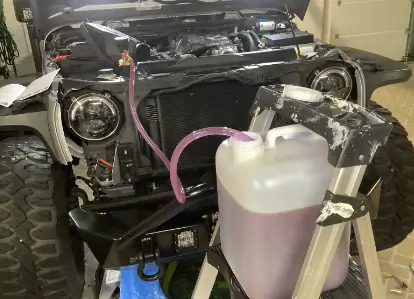
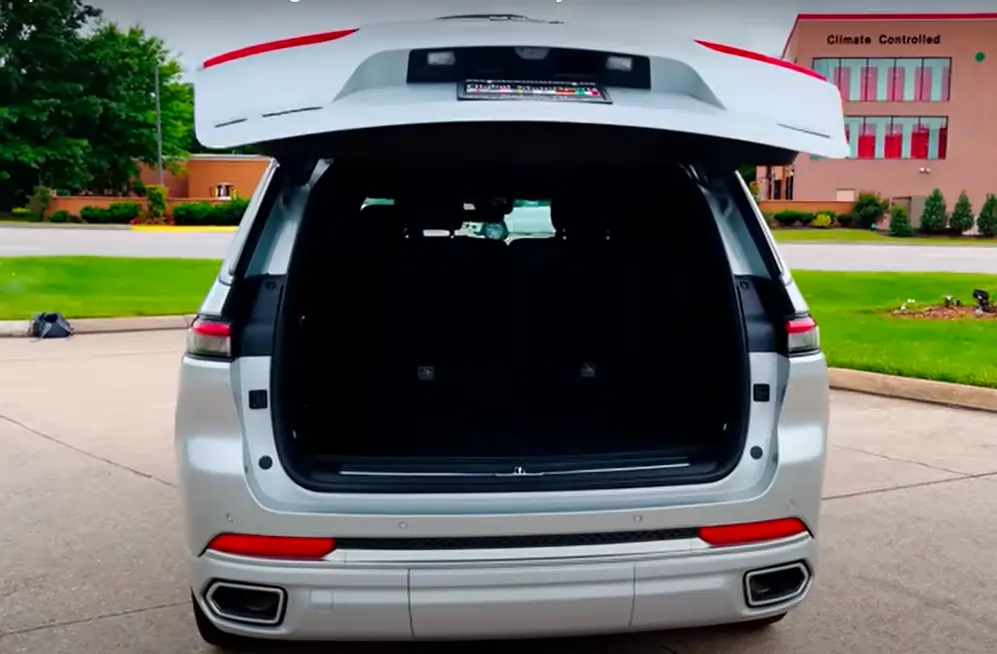
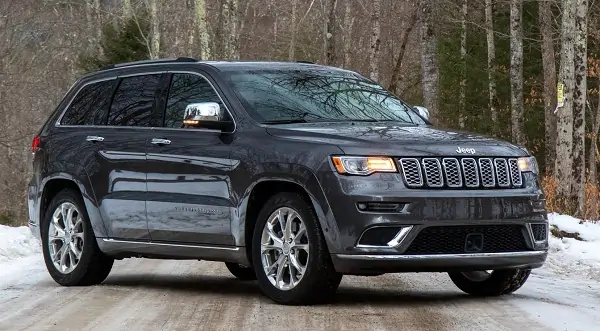
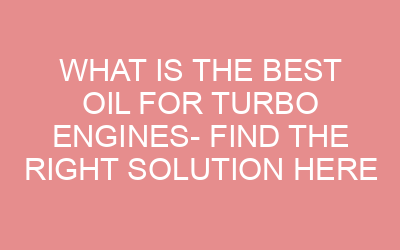
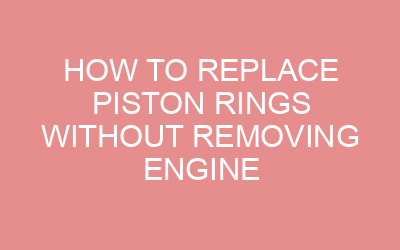

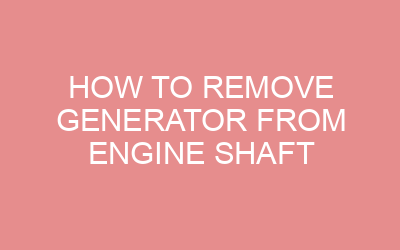
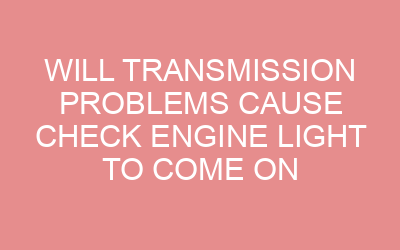

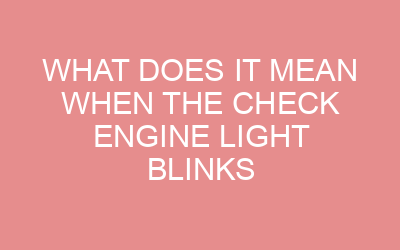
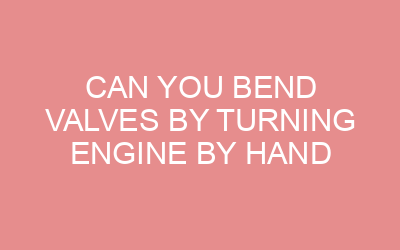


Leave a Reply